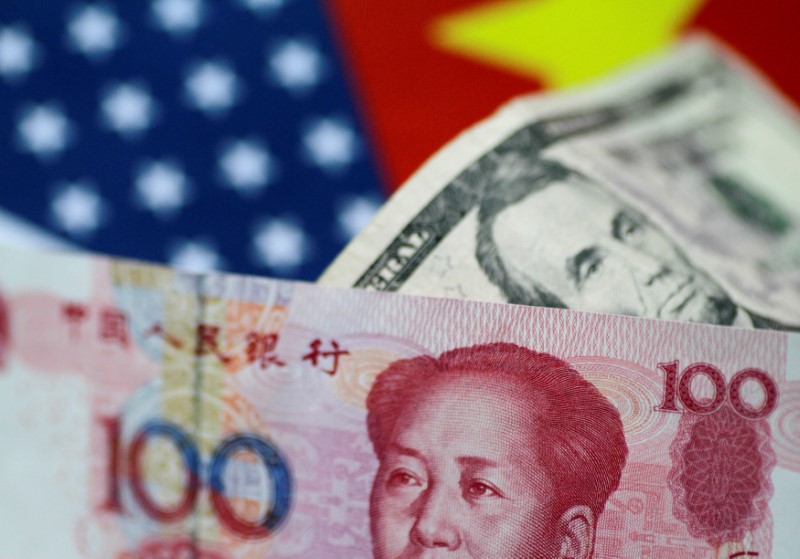
The dollar firmed slightly, with focus turning to a slew of Federal Reserve speakers this week for more cues on interest rates. The greenback was sitting on gains from last week amid bets on a slower pace of interest rate cuts.
The dollar index and dollar index futures rose 0.1% each in Asian trade.
Regional trading volumes were held back by a holiday in Japan, while the yen weakened slightly amid persistent doubts over the Bank of Japan’s ability to hike interest rates further. The USDJPY pair was back in sight of 150 yen.
The Chinese yuan weakened slightly on Monday, with the USDCNY pair rising 0.1%.
The currency was battered chiefly by data showing Chinese deflation remained squarely in play. Consumer inflation grew less than expected in September, while producer inflation marked a 23rd consecutive month of contraction.
Sentiment towards China was also dented by mixed cues on fiscal stimulus.
The finance ministry said in a weekend briefing that it did plan to dole out fiscal support, including more debt issuance and assistance for provincial governments.
But the briefing left out key details on the planned measures, specifically their scope and timing, which spurred limited optimism over more stimulus.
Beijing had in late-September announced a string of major monetary stimulus measures to help shore up sluggish growth. While spirits had initially been high over the new measures, a lack of clear details on their implementation tempered overall optimism.
Among other Asian currencies, the Indian rupee hovered close to record lows, after the Reserve Bank of India announced a pivot away from its hawkish policy during a meeting last week.
The rupee’s USDINR pair fell 0.1% after briefly hitting a record high of 84.205 rupees.
Focus was now on Indian wholesale and consumer inflation readings due later in the day. Consumer inflation is expected to have increased sharply in September due to food prices.
Broader Asian currencies were muted. The Australian dollar’s AUDUSD pair fell 0.1%, while the South Korean won’s USDKRW pair rose 0.5%.
The Singapore dollar’s USDSGD pair rose 0.1% after the Monetary Authority of Singapore kept policy unchanged. Gross domestic product data showed the island state’s economy grew sharply in the third quarter, albeit from a lower base of comparison.
To read the full article, Click Here

